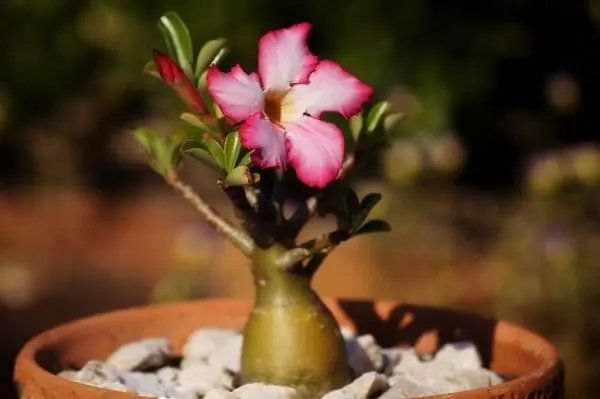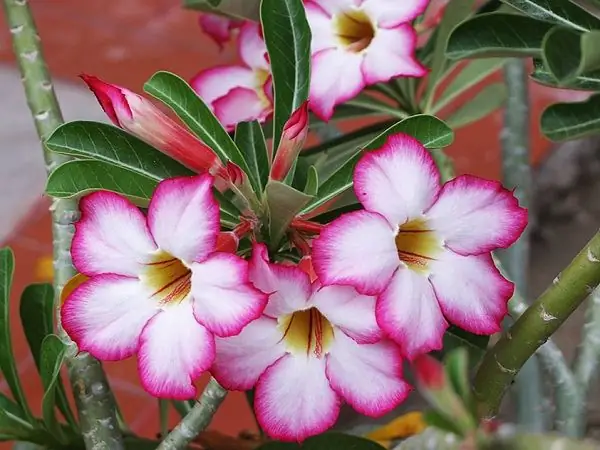The adenium plant is native to Central and South Africa. Belongs to stem succulents, reaching a height of 10 meters. Quite a whimsical adumium plant. He needs careful and thorough home care.

Adenium flower: photo and description
As indoor culture is used recently, but quickly became fashionable. Unpretentious care and exoticism attract many. It looks unusual - half tree and half-shrub. Its barrel is shaped like a bottle. The flowers are similar in shape to a rose, that is why its popular name is "Rose of the Desert". The flowers are beautiful - pink, burgundy, red, white, monochromatic and streaked. Against the background of thick trunks, they look original. Its juice is toxic. There are many species, but the most famous is the obese one. It differs in the thickness of the main stem and thin processes extending along the sides. It is often compared to a camel, since, by storing water, a plant can do without watering for a long time.

Adenium obese: home care
Leaves are fleshy, waxy. After wintering, the plant can bloom until leaves are formed. The flowers are pink or red up to 8 cm in diameter. When obese adenium is at rest, it is better to place it in a room where the plant will be cool. If you keep it in an ordinary warm apartment, it is advisable not to forget about watering and spraying. During winter, the pot is moved to a cool place. Then the adenium blooms often. It is a thermophilic species. In summer, it tolerates temperatures up to 28 degrees Celsius, and in the cold season - not lower than -10C. In warm weather, gardeners often transfer it to the open air, to a place with little shade on the sunny side.

After the leaves have fallen off, when the new ones have not yet grown, there is no need to water the soil. And in summer, at high temperatures, watering is recommended rare - once a week. In the spring, when young leaves grow and flowers appear, adenium needs feeding, which is carried out with fertilizer for cacti dissolved in water. The plant responds well to water spraying. To improve development, it should be transplanted once a year in the spring. The soil mixture should be light, loose, and contain river sand. When the flower reaches 3 years old, it is transplanted every two years, after which it is watered for the first time no earlier than a week later.






